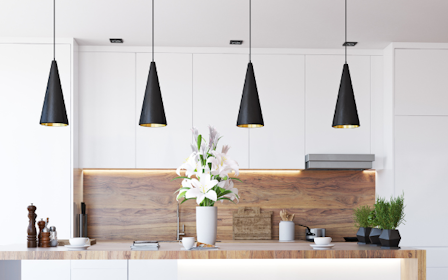When designing your dream home, every detail matters—including what’s on the walls. Wainscoting, a decorative wall treatment applied to the lower portion of walls, blends function and elegance to elevate a space. It was once used to protect walls, but today it’s a design staple that adds timeless charm and character to any space.
If you’re considering wainscoting a room or two in your own home, you’ll find everything you need to know about wainscoting right here, from different types of wainscoting to what rooms to wainscot and even a complete wainscoting buying guide.
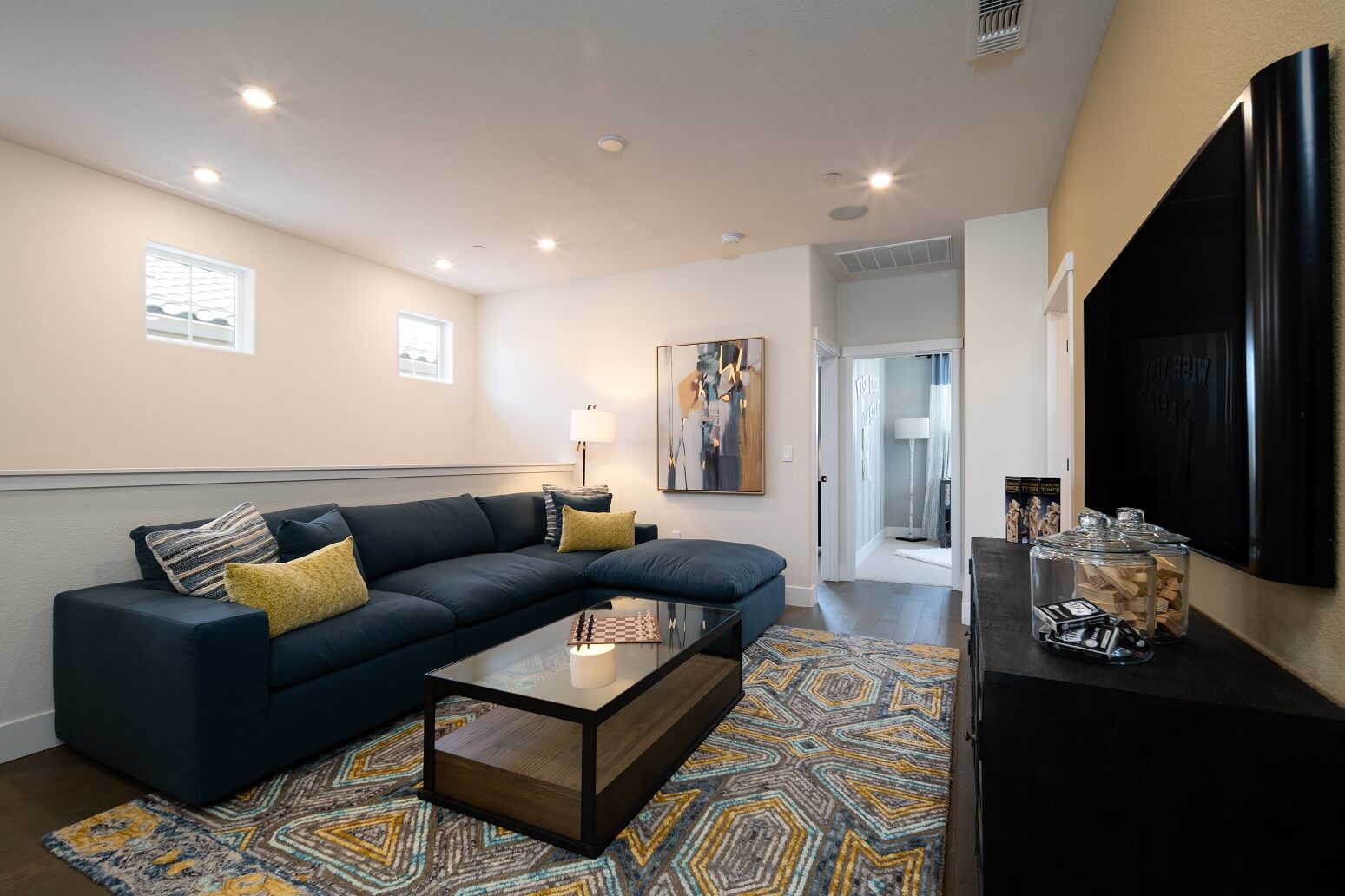 The Purpose of Wainscoting: Then & Now
The Purpose of Wainscoting: Then & Now
Historically, wainscoting was designed as a practical solution to protect walls from scuffs, moisture, and other damage in high-traffic areas like mud rooms, kitchens, and entryways. It also served as an insulating layer in colder climates, helping to keep homes warm.
Over time, wainscoting has evolved from a functional necessity to a decorative element, showcasing intricate paneling and craftsmanship. It adds texture, depth, and architectural interest to otherwise plain walls.
Whether used to create a sense of tradition or to complement contemporary styles, wainscoting remains a versatile feature that combines beauty and practicality.
Decorating With Wainscoting: Popular Wall Paneling Styles
Wainscoting comes in a variety of styles to suit different design preferences and room aesthetics. Whether you prefer a classic look or a modern twist, there’s a wall style to complement your home.
Beadboard
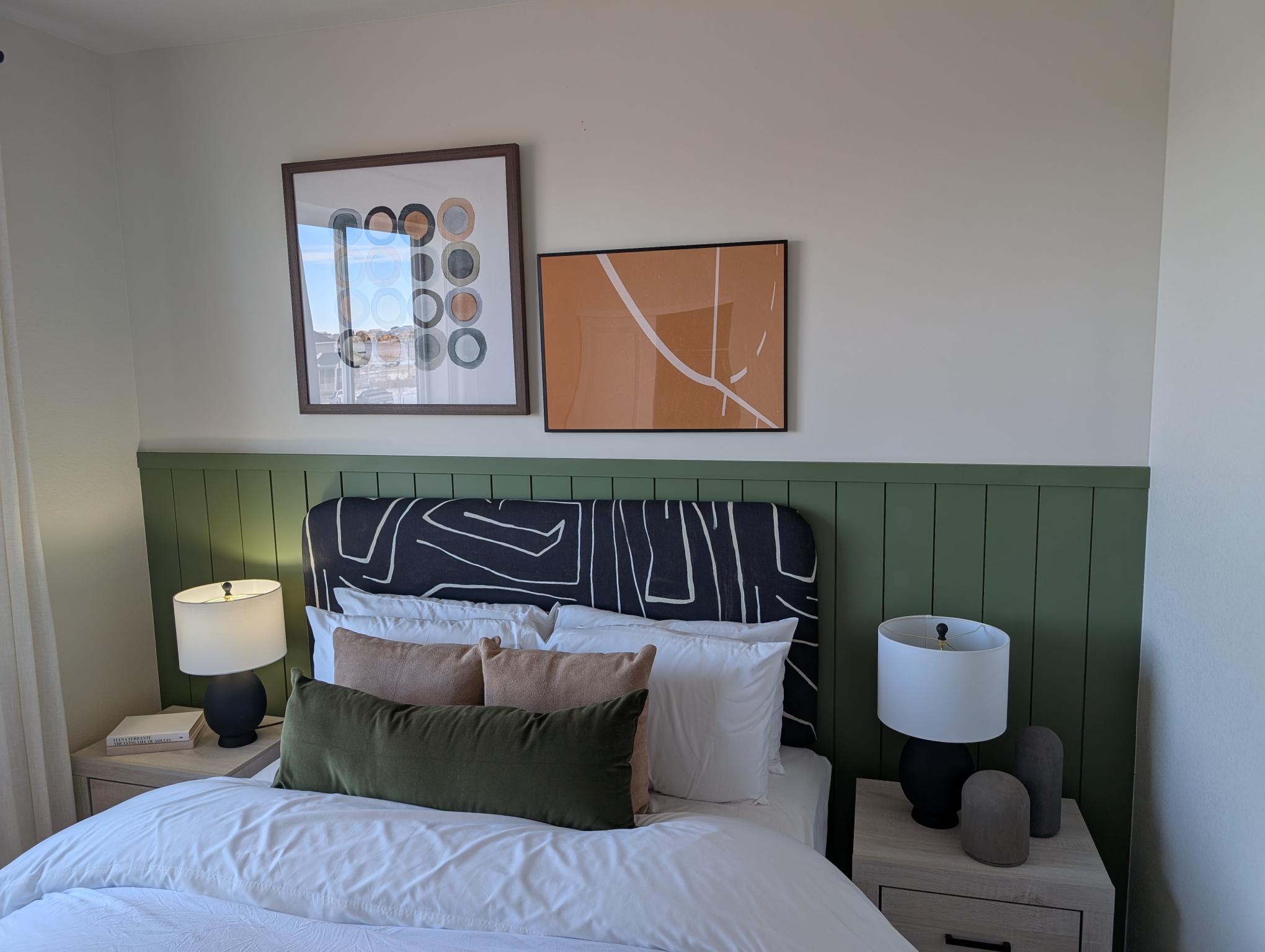 Beadboard features narrow, vertical planks separated by small grooves, creating a charming, cottage-style look that adds texture without overwhelming the design. It’s perfect for bedrooms, or for casual spaces like bathrooms, kitchens, or mudrooms.
Beadboard features narrow, vertical planks separated by small grooves, creating a charming, cottage-style look that adds texture without overwhelming the design. It’s perfect for bedrooms, or for casual spaces like bathrooms, kitchens, or mudrooms.
Raised panel
Raised panel wainscoting includes panels that protrude slightly from the wall, framed by beveled moldings. This traditional style is often found in formal dining rooms or libraries, adding depth and elegance.
Flat panel

Flat panel wainscoting, great for most rooms, consists of simple, recessed panels surrounded by a clean frame. Its minimalist look complements modern or transitional interiors while adding subtle architectural interest.
Board and batten
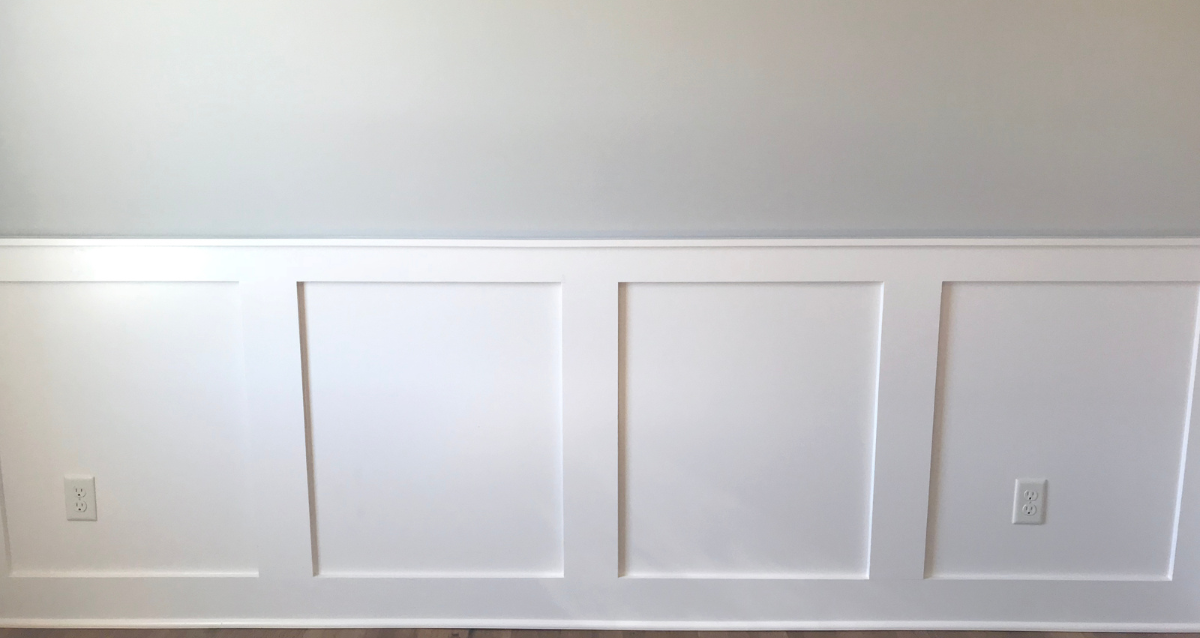
Board and batten wainscoting combines wide, flat boards with narrow strips (battens) placed over the seams. This versatile style works well in rustic and contemporary spaces, offering a clean yet dynamic appearance.
Beadboard and flat panel combination
This hybrid style combines the best of both worlds, featuring beadboard panels with flat panel framing. It’s a unique option for homeowners seeking texture and contrast and is ideal for spaces that balance casual and refined design elements.
8 Spaces to Add Wainscoting in Your Home
Wainscoting is a versatile design feature that can elevate the look of nearly any room in your home, but there are a few spaces where it's most common. Here are some of those areas:
- Entryways. A wainscoted entryway creates an inviting first impression, setting the tone for the rest of your home while protecting walls from scuffs and dirt.
- Kitchens. In kitchens, wainscoting adds charm and warmth. It’s particularly effective in breakfast nooks or as a backsplash alternative.
- Formal rooms. Dining rooms, libraries, and home offices gain an air of sophistication with the addition of raised panels or board and batten wainscoting.
- Stairs and hallways. Hallways and staircases benefit from wainscoting’s protective and decorative qualities, adding depth and interest to often-overlooked areas.
- Bathrooms. Moisture-resistant wainscoting materials like PVC are ideal for bathrooms, lending a clean and polished look while protecting walls from water damage.
- Children’s rooms. Durable wainscoting in kids’ rooms can withstand wear and tear while offering a playful or refined aesthetic.
- Family room. Family rooms, living rooms, or dens feel cozier and more inviting with the addition of wainscoting, especially in styles like flat panel or beadboard.
- Exterior. Exterior wainscoting is very popular, but the materials used tend to be brick or a brick substitute.
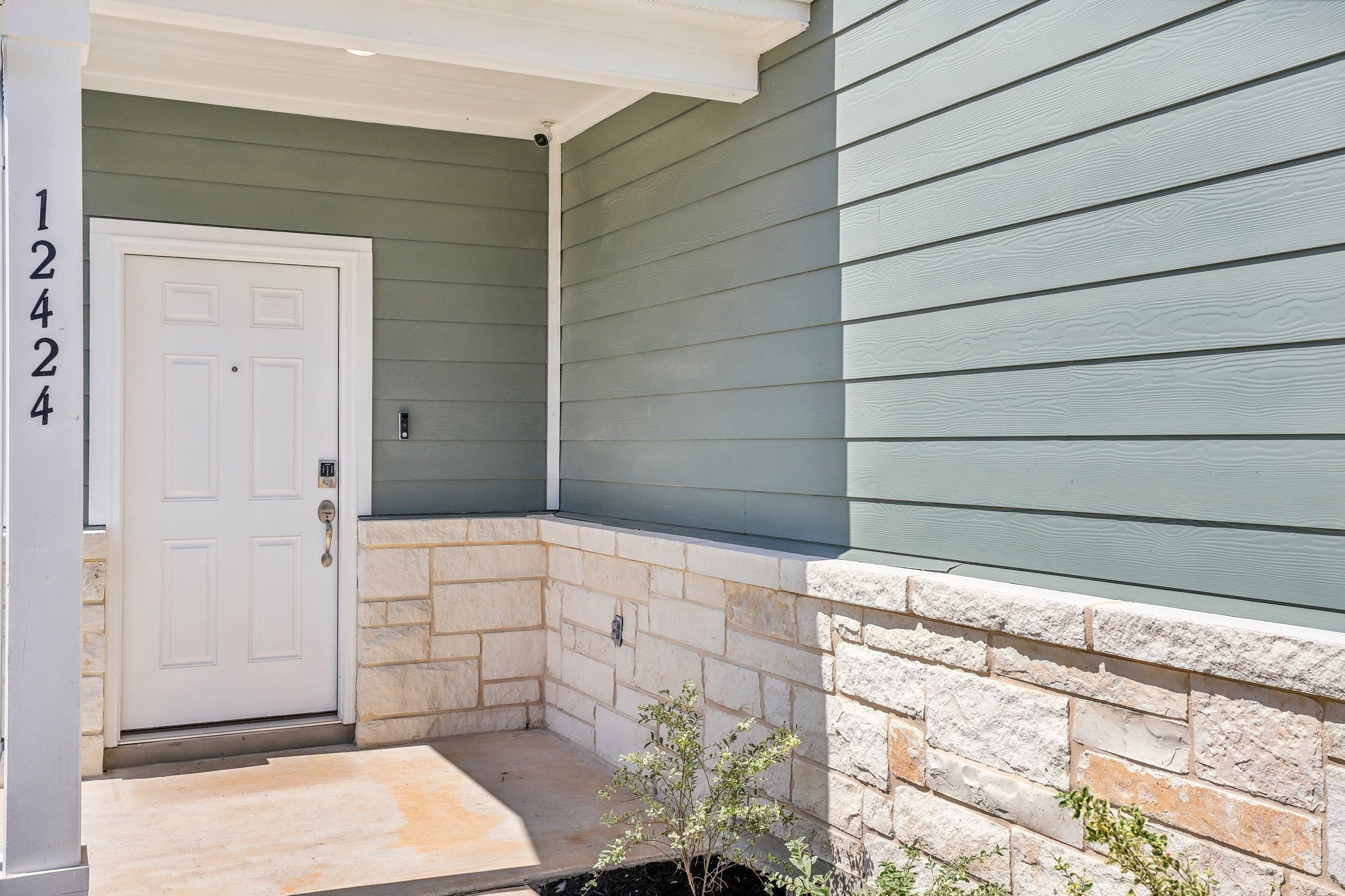
Buying Guide: What to Know About Wainscoting
If you’re ready to wainscot your home, there are a few things to consider before you break out the glue or hire an interior designer to do it for you. Below, you’ll find answers to top questions on wainscoting ideas.
What material should I use for wainscoting?
Wainscoting materials range from traditional wood and MDF (medium density fiberboard) to more modern, affordable options like PVC or laminate. Wood offers a classic look, while MDF and PVC provide durability and resistance to moisture, making them ideal for kitchens and bathrooms.
What is the standard height of wainscoting?
The standard height for wainscoting is typically one-third of the wall’s total height, but it can vary based on a room’s proportions. Common heights range from 32 to 42 inches, depending on personal preference and ceiling height. You can also wainscot floor to ceiling, as seen here.
How much does wainscoting cost?
The cost of wainscoting ranges from $7 to $40 per square foot, depending on materials and labor. DIY options can help reduce costs, but professional installation ensures precision and quality.
Is wainscoting always white?
Although white wainscoting is a classic and popular choice, it’s not the only option. Homeowners are increasingly experimenting with bold colors, natural wood wainscoting, or even two-tone combinations (one of our favorites) to create unique, personalized designs.
How do you measure wainscoting width?
To measure wainscoting width, divide the total length of the wall by the number of panels you want, accounting for the width of vertical stiles. Adjust as needed to ensure even spacing and a balanced look.
What is the most popular wainscoting size?
Popular wainscoting panel sizes vary between 18 to 24 inches wide, depending on the design. Chair rail height and the overall wall dimensions also play a role in determining panel size.
How do you glue wainscoting to a wall?
To glue wainscoting, apply a construction adhesive to the back of each panel and press it firmly onto the wall. Use a level to ensure proper alignment and secure panels with nails or brads for added stability as the adhesive sets.
What type of molding goes on top of wainscoting?
The most common type of molding used on top of wainscoting is a chair rail, which provides a clean, finished edge. You can also opt for decorative moldings to match the style of your room or add visual interest.
What are the maintenance requirements for wainscoting?
Wainscoting is relatively low-maintenance, requiring only occasional dusting and cleaning with a damp cloth. In high-traffic areas, annual repainting or touch-ups may be needed to keep wainscoting fresh and polished.
That’s a Wrap on Wainscoting
Wainscoting is the true definition of function and form. Historically used to protect walls, this design element has evolved into a versatile feature that enhances the aesthetics of any home. Whether you favor classic raised panels or contemporary flat styles, wainscoting adds depth, texture, and character to your living spaces while offering practical benefits like wall protection and insulation. From timeless elegance to bold modern statements, wainscoting allows you to customize your home’s interior to reflect your style.
Wainscoting FAQ
Is it wainscoting or wainscotting?
The correct spelling is wainscoting, though some people pronounce it as "wainscotting,” hence the confusion. However, both terms refer to the same decorative wall treatment we all know and love.
What style of house has wainscoting?
Wainscoting can be found in a variety of homes, from traditional Colonial and Victorian styles to modern and farmhouse designs. Its versatility makes it a popular choice for enhancing different architectural aesthetics.
What is the difference between wainscoting and wood paneling?
Wainscoting is a specific type of wood paneling applied to the lower portion of walls, often featuring framed sections and moldings. Wood paneling, or shiplap, can cover an entire wall and may lack the structured, decorative elements of wainscoting.
How is wainscoting pronounced?
Great question! Wainscoting is typically pronounced as "wayn-skoh-ting" or "wayn-skuh-ting," depending on regional accents. Both pronunciations are widely accepted.
